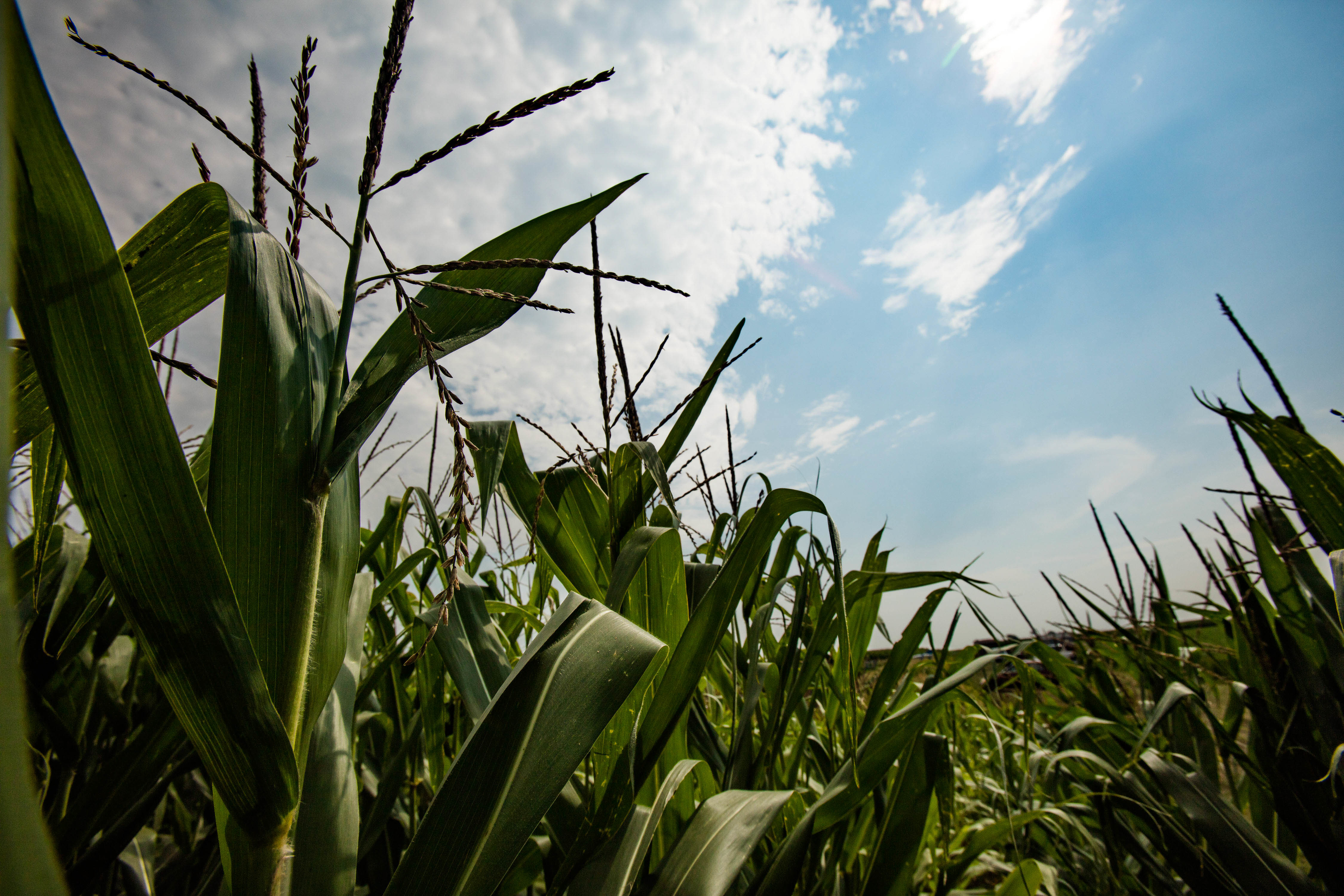Dynamic photosynthesis model simulates 10-20 percent yield increase
CHAMPAIGN, Ill. — A team from the University of Illinois has developed a model that treats photosynthesis as a dynamic process rather than an activity that either is or is not happening. This allowed the group to examine the impacts of the many fluctuations in light that crop leaves experience due to intermittent clouds, overlying leaves, and the sun’s daily passage across the sky. In today's densely planted crops, these fluctuations are the norm. Lower efficiency of photosynthesis due to slow adjustment to light changes and are estimated to cost up to 40 percent of potential productivity. If crop leaves could be genetically manipulated to adjust more rapidly, then the gain in productivity and efficiency of water-use would be substantial.
Plants use sunlight to generate their food through photosynthesis. When the sun rises each morning, plants must prepare themselves to receive nutrients from the sunlight, which takes time. Decreasing the prep time of plants could hold the key to improving yields in many varieties.

“When light changes, the plants need time to get used to it. It takes time and decreases efficiency,” said Yu Wang, a postdoctoral researcher at Illinois, who led this work for a research project called Realizing Increased Photosynthetic Efficiency (RIPE). “Our goal is in trying to limit the loss during the transition period. We are working to make the plants respond faster to the dynamic light environment.”
RIPE, led by Illinois, is an international research project that aims to increase global food production by developing food crops that turn the sun’s energy into food more efficiently with support from the Bill & Melinda Gates Foundation, Foundation for Food & Agriculture Research, and U.K. Foreign, Commonwealth & Development Office.
In this recent study, published in The Plant Journal, RIPE researchers showed that by treating photosynthesis as a dynamic process, they could improve the response time of C4 plants, (plants that use C4 carbon fixation for photosynthesis) such as corn, to adjust more rapidly to fluctuations in light.
First, they validated their model against actual photosynthesis measurements in fluctuating light, which they made in corn, sorghum, and sugarcane. They then used their model to predict which steps in photosynthesis limited the response of the process to fluctuations in light in the three crops.
“The important thing to realize is in a crop canopy, light is changing all the time, and yet 99% of investigations of what limits photosynthesis have concerned constant light, something a crop leaf in the field might never experience,” said RIPE Director Stephen Long, Ikenberry Endowed University Chair of Crop Sciences and Plant Biology at Illinois’ Carl R. Woese Institute for Genomic Biology. “Perhaps we overlooked the idea that if we improve efficiency in fluctuating light, not just in constant light, we could see big results.”
By treating photosynthesis as a dynamic process, the team was able to look at which segments of the process limit the speed of response. Through their modeling and simulation, they identified two proteins they believe are essential in the adjustment. This summer, the group is continuing their work by partnering with another RIPE research team to regulate the two proteins in corn and with a team from the U.S. Department of Energy Center for Advanced Bioproducts & Bioenergy Innovation (CABBI) at Illinois in sorghum and sugarcane to engineer these proteins.
“We think this has great potential,” said Long. “This could improve productivity by 10 to 20 percent. Compared to yield increases that are achieved, more importantly, year over year with breeding, this would be a large jump. Of course, time will tell if we can realize this.”
Realizing Increased Photosynthetic Efficiency (RIPE) aims to improve photosynthesis and equip farmers worldwide with higher-yielding crops to ensure everyone has enough food to lead a healthy, productive life. RIPE is sponsored by the Bill & Melinda Gates Foundation, the U.S. Foundation for Food & Agriculture Research, and the U.K. Foreign, Commonwealth & Development Office.
RIPE is led by the University of Illinois, in partnership with The Australian National University, Chinese Academy of Sciences, Commonwealth Scientific and Industrial Research Organisation, Lancaster University, Louisiana State University, University of California, Berkeley, University of Cambridge, University of Essex, and U.S. Department of Agriculture, Agricultural Research Service.
The RIPE project and its sponsors are committed to ensuring Global Access and making the project’s technologies available to the farmers who need them the most.
By: Allie Arp || RIPE Communications Manager